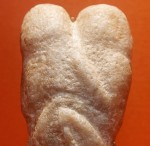The Little Mermaid was …autistic?
Could be. Could be.
Once upon a time, there was a little mermaid who fell in love with a human prince. She traded her tongue to the sea witch, who gave her legs in return. When the mute girl failed to win the prince’s love, she lost her life and turned to air. –So says Hans Christian Anderson.
Once there was an Undine who fell in love with a knight. She bore him a child and gained a mortal soul, but in time he proved false, betraying her and leaving her stranded in a hot, dry world. –So says Friedrich de la Motte Fouqué.
Once there was a selkie woman whose skin was stolen by a fisherman. Trapped in human form, she bore him a child, but as soon as she recovered her skin, she returned to her home in the sea. So say the folktales.
All three of these tales—three faces of one story—involve water creatures shape shifting into human form, rather than humans transforming into animal form. What a curious emotional stunting we see on the part of humans—in these stories, we do not return love, we do not recognize love, we betray love, we mistake coercion for love. In the little mermaid’s case, there is an inability to communicate…the symbolic loss of her tongue could equally describe the inability of the prince to understand or register her voice.
In the past, when I’ve thought about the figure of the mermaid, the Undine, it has seemed to me an allegory for gender difference. After my four week shapeshifting class, however, I’ve come to understand the value of these stories as tales of shapeshifting.
Shapeshifting is a huge topic, and one four week class can hardly scratch the surface. But one thing that occurs to me even after only four weeks: the trope of shapeshifting gives people a way to frame difference within a population.
The expert-textperts will frame difference another way. They’ll tell you, for instance, that autistic people are emotionally less connected, that they experience a smaller range of emotions and do not feel or understand empathy for others.
Those of us who know and love autistic folk know that they feel all and more than we do, often, and register every emotional shading in the room—they simply don’t have the language to speak it. Or we don’t have the ears to hear.
These stories of the waterfolk who occasionally rise to the surface and mingle with us remind me to stay alert for the variety of intelligences that nudge and stretch our concept of what it is to be human, to be normal. What would it be if we reframed mental difference, psychological outliers, as filled with potential? Gifted, rather than different, strange, wrong, needing to be fixed?
What a curious emotional stunting we see on the part of (neurotypical) humans.
















